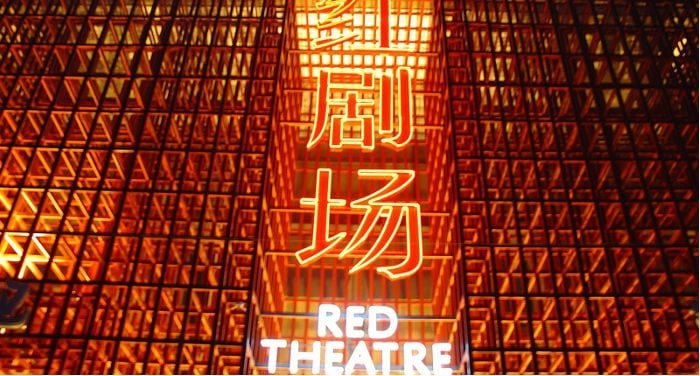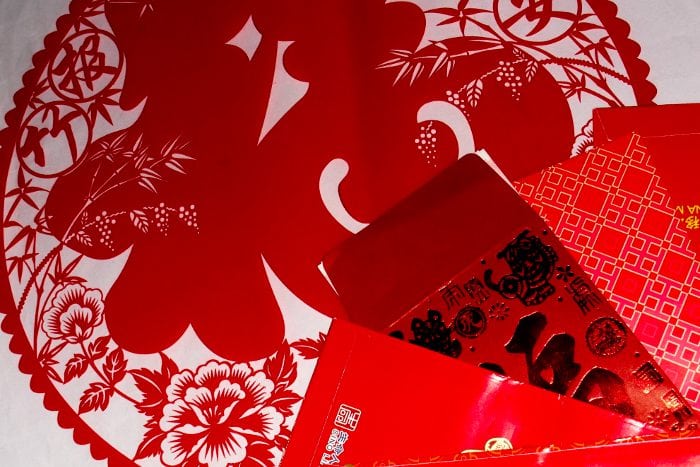In this article I will review the show “The Legend of Kung Fu” which has as its protagonists the Shaolin monks. The show is performed every night at Beijing’s Red Theater.
The last part of the article is reserved for practical information: ticket prices, and where and when to see the show “The Legend of Kung Fu”.
If you are looking for a general information about traveling to Beijing, you can read our complete guide.
Introduction
The first to introduce the words “kung fu” into western terminology was Bruce Lee, when asked the question “what do you call what you do?” he responded: “it’s called kung fu”.
Bruce Lee was perfectly aware that what he said was inaccurate but when dealing with the West, which wants things fast and simple, he took this liberty.
In fact, to say “I do kung fu” doesn’t specify anything in particular because, to do kung fu in a Chinese sense, just means to have reached a high level in something.
For example, if I have multiple degrees and tenure in a prestigious university, “I do kung fu” in studies.
In the same way, if I have reached a high level in any style of the martial arts, then “I do kung fu” in that particular style.
Bruce Lee was a master of many styles of martial arts, and so as not to bore the less-informed listener, which would otherwise find it difficult to understand terms such as Wing Chun or Hung Gar, he just said “I did kung fu”.
He was taken literally and since then the term “kung fu”, in the West, is identified with the practice of martial arts, which in Mandarin are simply called “wushu”.
So why would a Chinese show have a title like this?
The main reasons are, in my opinion, the following:
- The show has a Western target audience and is in English (with Chinese subtitles).
- During the show various styles of martial arts are presented; so the title includes all of them.
- By now, the “acquired meaning” of the words kung fu has reached such popularity that even the Chinese (especially those who are not martial arts experts) have begun to use them as a term referring to the practice of martial arts.

The show
The plot
The show recounts the story of a child who is left by his poor mother who doesn’t have the means to provide for him, with the monks of a Buddhist temple (which are in fact Shaolin) so that they can take care of him and teach him the art of combat, in order to guide him toward his personal and human achievement.
The child doesn’t want to leave his mother, and to convince him, the wise master monk tells him a story, which is revealed to be his, when he too was left by his mother with the monks of the temple.
From here the whole story unfolds, as the show’s plot represents the old teacher’s life with his narration in the background (in English).
He too didn’t want to study martial arts, but then, dazzled by the skills of the warrior monks and comforted by the company of two other friends, he decided to follow “the Way” of learning.
He faces difficulties when, as a teenager, the call of temptation from the life outside the monastery, represented by a splendid maiden, makes him doubt his intentions.
Under the guidance of the teacher, however, he is convinced to forget his earthly passions and dedicate himself to practice and meditation to reach illumination.
The years pass and the boy, now a man, is a strong and powerful warrior with a body of iron. His ego, at this point, is exalted and leads him to fall into the sin of arrogance, to the point of challenging his own friends and companions; abandoning the “Way” of illumination and practice.
This causes him to be alone and when his old mother dies and he realizes his error, he has another moment of weakness and is at the point where he wants to give everything up.
The only enemy that can get him into trouble is himself.
In remorse and desperation he is not however abandoned by his teacher, who again guides him in the right “Way”.
Now, more convinced and certain than ever, he returns to the temple and thwarts a bandit attack with his re-found old friends.
After overcoming yet another last trial and abandoning his ego, he is ready to become the temple’s abbot in place of his now elderly teacher, who dies of old age, happy to have completed his mission.
In the plot there are all the elements of martial art philosophies that by their very nature aren’t physical, but rather psychological. Rather, it was when the physical dimension gets the better of him that he moves further from the final objective.
To that purpose, an important psychological element covered in the show is the suppression of one’s ego, which always tries to emerge again.
This is a fundamental path, both for reaching illumination and a sense of peace, as well as learning martial arts.
The setting
The story is narrated in a very pleasant way that is never too heavy. The monk-master’s narrator’s voice is deep and helps you get into the scene.
The scenery is impressive and the accompanying lights and music are worthy of a Hollywood show. With the presence of lots of actors (all martial arts experts) it creates a rich scene in continuous movement.
The show is performed by true experts who have studied martial arts at the Shaolin temple, which makes it interesting. During the show they perform all that which the Shaolin temple is famous for the world over, not skimping on the fighting and feats of strength.
The protagonist, a real iron man, is made to do everything: he bends spears by placing the point on his throat, he breaks metal plates with a blow from his head, he lies down on pointed swords with weight one top of him, is beaten on the arms, legs and even the head, breaking the canes like they were nothing, and much more.
There are no tricks or deception. For those who know the Shaolin style, with its grueling training and strict discipline, everything becomes clear; even if at first glance it is almost unbelievable.
There are also some nice dance pieces the enrich the performance and break the tension.
Noteworthy too is the presence of at least six children, who look to be between the ages of 8 to 10, whose abilities in the martial arts leave them with no reason to be jealous of the adults.
The result is very enthusiastic and the hour and a half that it takes passes by quickly; actually, when it’s done you’ll feel a little regret that you weren’t able to appreciate everything about the scenes that are so rich and moving.
The martial art styles
As was explained in the beginning of this article, saying that the actors practice kung fu seems quite an understatement.
It should also be said that these days, the Shaolin temple teaches many styles, whose rights have been acquired thanks to notable international donations of which the majority are not derived from the thousand-year-old history of the temple that was founded by Bhodidharma, when he arrived from India to spread Buddhism in China in the eighth century A.D.
Nonetheless, in the show they perform and demonstrate the great styles that have always characterized the practices they carry out, and still do, at the temple and have made Shaolin famous worldwide as the icon for the warrior monk.
These main styles are called Waigong, Yinggong, Qinggong, Neigong and Qigong.
Waigong and Yinggong are practices that have the purpose of strengthening specific parts of the body.
At the age of 12-13 years old, the practitioner who wishes to dedicate themselves to this type of art must choose the part of their body they wish to work on, which from that point on will become the object of their attention for the rest of their life, to the point of becoming an actual weapon.
Everyone though carefully works on the strengthening of the skin to the point of making it virtually impenetrable.
These results are achieved with patience and total dedication: as an example, to strengthen the skin at the throat, from a young age kids are literally hung with a cord around their neck; initially for just a few seconds then, little by little, year after year, they can remain hung for hours in meditation.
The results are truly extraordinary and are presented and demonstrated during the central phase of the show.
The practices of Qinggong refer instead to the development of techniques based on jumps and aerial blows. These practices are in the show but less significant in view of their less spectacular nature.
Those just described are the external styles (Waijia); in the monastery they also practice internal styles (Neijia) the predominant one being Qigong.
Qigong includes a series of different approaches and movements that serve to heal the body to make it strong, flexible and healthy.
Basically, you can say that Qigong is used to obtain longevity and practice self-cultivation.
These two objectives are pursued with moving mediation and other various techniques, all with the purpose of developing, growing and freely circulating throughout the body the Qi, the vital energy that we all have.
To represent this style, at least in part, they perform the Yi Jin Jing, which are a typical form of Shaolin Qigong practiced by the monks since ancient times; from when they found the temple founder’s book in a cave that explained to them how to do it.
They also present the five animal form of Qigong: crane, tiger, toad, serpent and praying mantis. Although this form of Qigong is not originally from Shaolin (like the Yi Jin Jing), since it is originally from the southern part of China it’s been taught at the temple for a long time and is still widely practiced in all of China.
Besides these major styles they also perform movements borrowed from other styles that aren’t directly traceable to Shaolin.
For example, I can definitely say that I recognized a few movements from the forms of Chen style Tai Chi. There’s also a wide selection of weapons displayed with demonstrations on their use: swords, sabers, pikes, spears, canes, knives; the list is long and their use is spectacular.
I won’t go on about the varying uses of the weapons but it’s worth mentioning a very strange weapon that by its appearance would be quite effective. I don’t know its name but I’ll try to describe it: it’s a pyramid of rather heavy metal (around 3-5 Kg) attached to a very long thin chain (I’d say about 3 meters).
It is handled with both arms and wrapped around the arm and elbows to be released with great power and velocity. It can strike both long and short range but you’d need to be very skilled in the maneuver so as not to get tangled and hit yourself. It’s truly interesting to see in action and deadly in battle.
The only regret, at least from my point of view, is that all these movements and martial forms are performed very, very quickly, which attests to the high skill level of the practitioners but doesn’t allow you to grasp the details.
Where and when to see “The Legend of Kung Fu” (costs included)
The show takes place at the Red Theater in Beijing, located at 44 Xing Fu Da Jie, Dongcheng District (崇文区幸福大街44号).
The show is performed every evening from 19:30 to 20:50 and from June to August, there is also a show from 17:15 to 18:40.
The Red Theater can easily be reached by the subway, just get off at Tiandongmen station, exit B, and go straight (with the exit behind you) for about a kilometer. At the second light turn left, cross the street and continue for about another 100/150 meters until you see a building lit up in red with the enormous words “Red Theater” on the right side of the road.
If you want to avoid the walk (which takes about 10 minutes), at the exit of the metro station there are lots of taxis and cars that for 10 or 15 Yuan will bring you to your destination.
Another option is to book a tour; in this case the agency should come get you from your hotel in a minibus (prices start from 250 Yuan per person, including the cost of the show ticket).
At the box office in front of the theater’s entrance, tickets start from 200 Yuan for an upper level seat all the way up to 880 Yuan for a VIP seat (with a little table attached to the chair) in the central section. There are also other ticket types for seats to the side that are more or less close to the stage.
I saw the show from the upper level and have to say that you can see quite well, and being up high your view is perhaps better and more complete. Moreover the chairs, unlike the ground level, are arranged on an inclined plane. This allows a good view even for those who aren’t in the front row. Actually, the first and second rows should absolutely be avoided since the handrail blocks the view and makes it necessary to watch the show from an uncomfortable position.
If you decide to go alone – that is without the help of an agency, I recommend that you book online at this site to get a noticeable discount and pay per 140 Yuan a person (for an upper level ticket).
If you want to buy souvenirs; there are two shops on the ground floor inside the theater that sell a little of everything.
If you’d be content only with a photograph you can wait until the end of the show, when the most representative actors mix with the public. You can go up onstage and take a picture with them for 20 Yuan, which will be refunded if you then buy something in the theater’s stores.
In my opinion it is definitely worth the trouble to go see the show. You’ll leave satisfied whether or not you like martial arts.
Photo Credits: ![]() Evening visit to the Red Theatre, Beijing by Andy Miah
Evening visit to the Red Theatre, Beijing by Andy Miah



